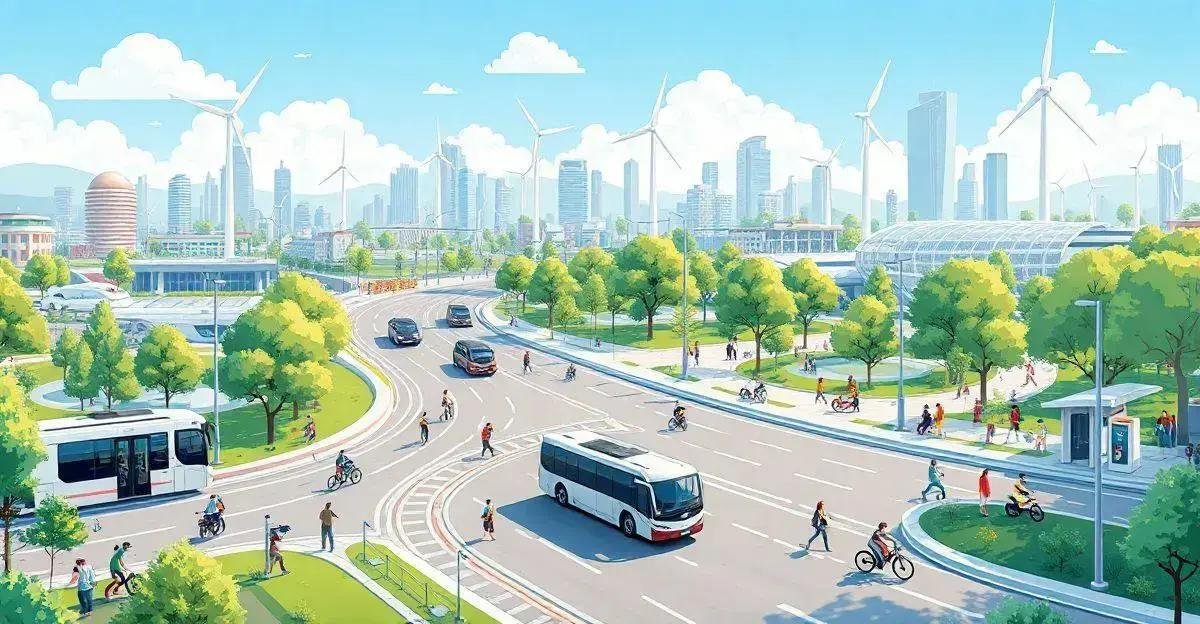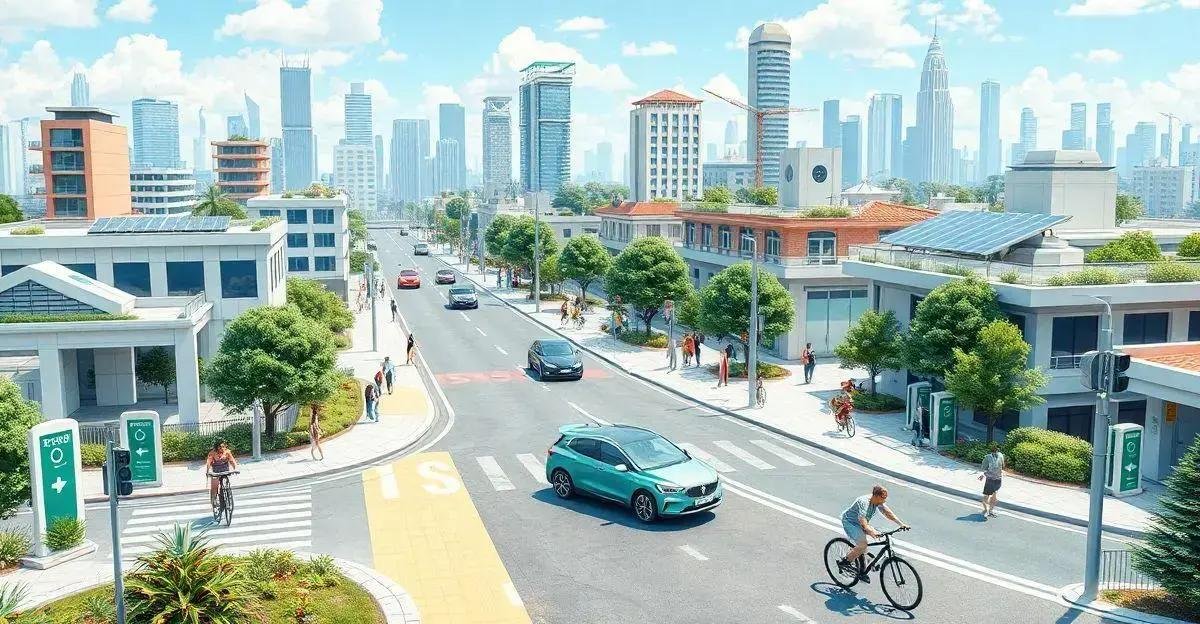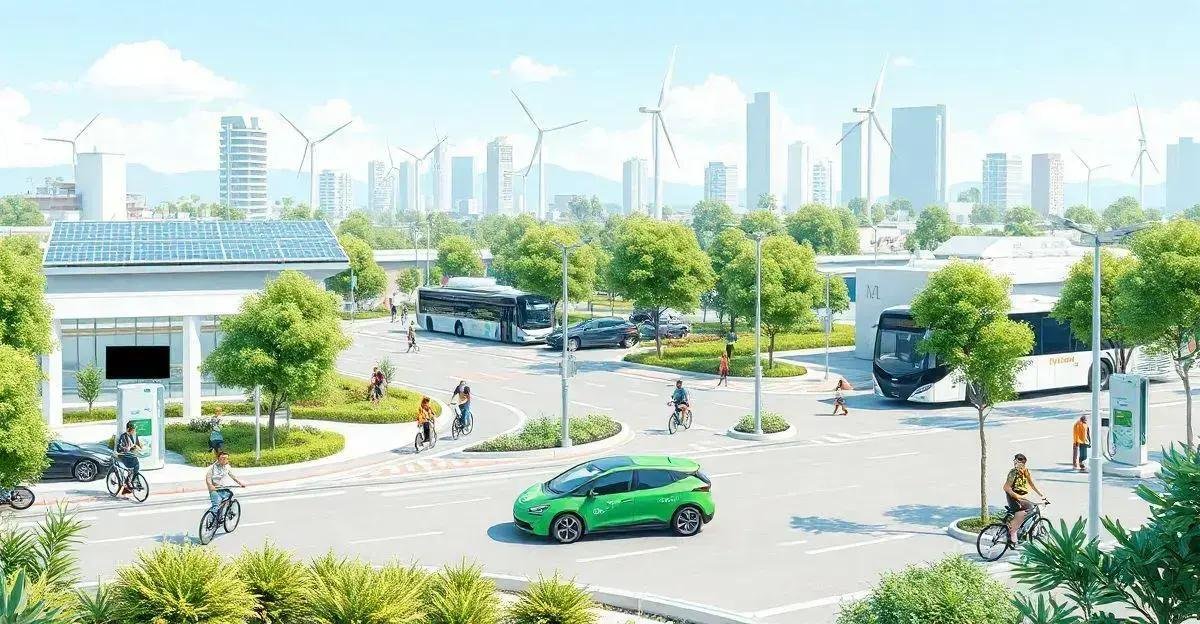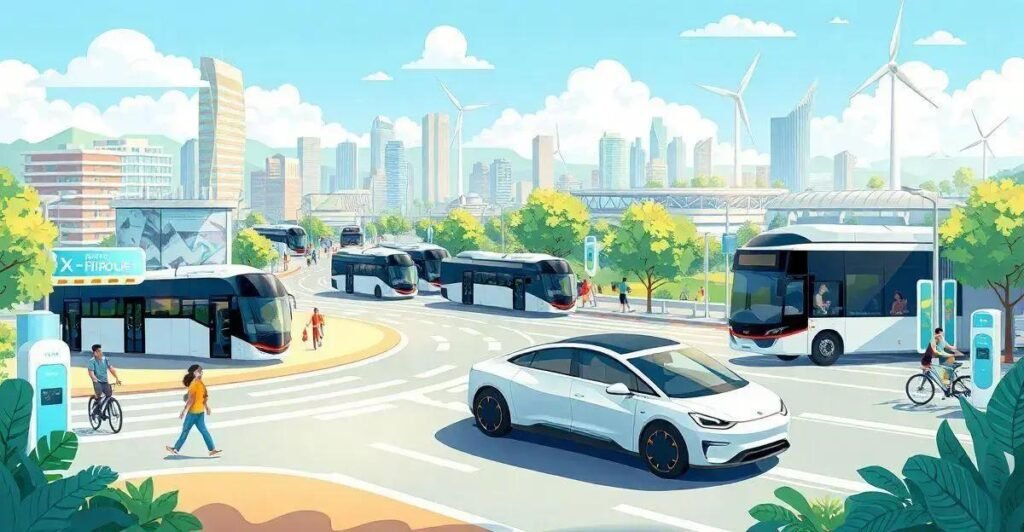The electric mobility future is rapidly unfolding, with technological advancements and shifting consumer behaviors driving the adoption of electric vehicles.
As governments and companies set ambitious targets to reduce carbon emissions, the electric mobility future is poised to transform the way we travel.
In this article, we’ll explore the evolving landscape of electric mobility, from innovative technologies to infrastructure development and regulatory frameworks.
Evolving Technologies in Electric Mobility
Evolving technologies in electric mobility are driving innovation and efficiency in the industry.
Advanced battery technologies are enabling electric vehicles to travel longer distances, while fast-charging infrastructure is reducing charging times.
Additionally, autonomous vehicle technology is being developed to improve safety and reduce accidents.
The integration of these technologies will play a crucial role in shaping the electric mobility future.
For instance, Vehicle-to-Grid (V2G) technology allows electric vehicles to act as energy storage devices, providing power to the grid during peak hours.
As these technologies continue to evolve, they will not only enhance the user experience but also contribute to a more sustainable and environmentally friendly transportation system.
The Rise of Sustainable Transportation

The rise of sustainable transportation is being driven by the increasing adoption of electric vehicles, buses, and trains.
Government incentives and tax credits are encouraging individuals and companies to make the switch to sustainable transportation options.
Additionally, public transportation systems are being revamped to prioritize sustainability, with cities investing in electric buses and bike-sharing programs.
As the demand for sustainable transportation continues to grow, private companies are responding with innovative solutions, such as car-sharing services and ride-hailing apps.
The result is a transportation landscape that is not only more environmentally friendly but also more efficient and convenient.
Challenges and Opportunities in the Electric Mobility Future
Despite the progress made in electric mobility, there are still several challenges that need to be addressed in the future.
Range anxiety and charging infrastructure limitations are major concerns, as well as the high upfront cost of electric vehicles.
On the other hand, the electric mobility future also presents numerous opportunities, such as the potential for grid-scale energy storage and the creation of new job markets.
To overcome the challenges, governments and companies must work together to develop and implement effective policies, invest in research and development, and promote public awareness and education.
By doing so, we can ensure a smooth transition to a sustainable and environmentally friendly transportation system.
Infrastructure Development for Electric Mobility

Developing the necessary infrastructure is a critical component of the electric mobility future.
Charging stations must be installed along highways and in urban areas to support the widespread adoption of electric vehicles.
Additionally, grid-scale energy storage will be required to manage the fluctuations in renewable energy generation.
Governments and private companies are investing heavily in infrastructure development, with many countries setting ambitious targets for the installation of charging stations.
As the infrastructure evolves, it will be essential to ensure that it is compatible with different types of electric vehicles and can support the growing demand for charging services.
Regulatory Frameworks for Electric Vehicles
Regulatory frameworks are playing a crucial role in shaping the electric mobility future.
Government incentives and tax credits are encouraging the adoption of electric vehicles, while emission regulations are driving the development of cleaner and more efficient technologies.
Additionally, standards and certifications are being established to ensure the safety and quality of electric vehicles and charging infrastructure.
As the regulatory landscape continues to evolve, it will be essential for governments, companies, and consumers to work together to create a framework that supports the widespread adoption of electric mobility and reduces greenhouse gas emissions.
The Impact of Electric Mobility on the Environment

The impact of electric mobility on the environment is a significant concern as the world transitions to a more sustainable transportation system.
Greenhouse gas emissions from fossil fuels are a major contributor to climate change, and electric vehicles offer a cleaner alternative.
Additionally, electric mobility can help reduce air pollution in urban areas, improving public health and quality of life.
As the demand for electric vehicles grows, it is essential to prioritize the development of renewable energy sources to power the charging infrastructure, ensuring a sustainable and environmentally friendly transportation system.
Frequently Asked Questions about Electric Mobility
What are the benefits of electric vehicles?
Electric vehicles offer several benefits, including zero tailpipe emissions, reduced greenhouse gas emissions, and lower operating costs.
How does the charging infrastructure for electric vehicles work?
The charging infrastructure for electric vehicles is a network of charging stations that can be found along highways, in urban areas, and at home. Charging times vary depending on the type of charging station and the capacity of the vehicle’s battery.
What are the challenges facing the widespread adoption of electric vehicles?
Some of the challenges facing the widespread adoption of electric vehicles include range anxiety, high upfront costs, and limited charging infrastructure.
How can governments and companies work together to promote the adoption of electric vehicles?
Governments and companies can work together to promote the adoption of electric vehicles by offering incentives such as tax credits and rebates, investing in charging infrastructure, and educating the public about the benefits of electric vehicles.
What is the impact of electric mobility on the environment?
Electric mobility has the potential to significantly reduce greenhouse gas emissions and air pollution in urban areas, improving public health and quality of life.
